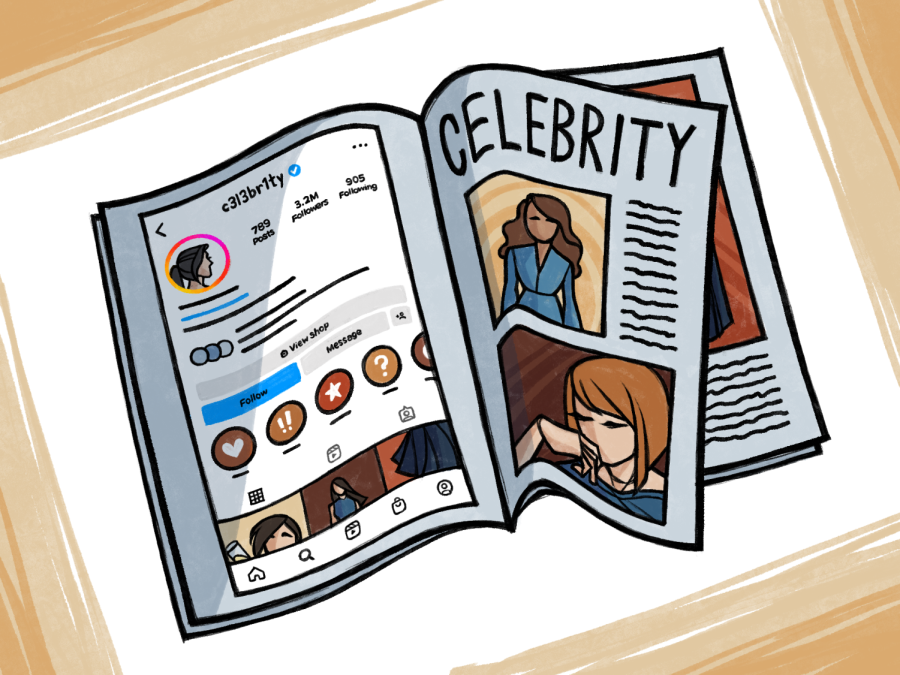‘Nowadays, you can get famous for anything:’ SCHS community reflects on changes on influencer outreach
In the past, influencers used outlets like magazines to reach a wider audience. Nowadays, influencers utilize social media to connect with their following.
For many, phone usage and scrolling aimlessly through social media has become a natural habit, and it can be hard to imagine living without it. Back in the 1980s, however, social media did not exist, with the internet just beginning to emerge publicly. Despite the lack of social media, there were still platforms that influencers used to promote their work. In comparing the past with modern culture, students and staff reflected on how content has developed to be shared in new ways.
YouTube has been a common video sharing platform to promote influencers’ brands and paid advertisements. In the 1980s, a close resemblance to the website was MTV, a TV channel that played a loop of music videos.
English teacher Christy Gutierrez recalled waiting in front of the TV for her favorite songs to come on. Besides listening to the radio, MTV was the main way to discover new music and artists.
“They (her favorite songs) would only come on once an hour, and you’d have to wait for them too,” Gutierrez said. “Now, you can press a button and ask Alexa to play your favorite song. Back then, you had to wait for them to play it.”
Nowadays, streaming services such as Spotify find songs for listeners. For convenience and easier accessibility, music streaming platforms create customized playlists for users, like junior Nadine Ngo. She recalled discovering one of her favorite music artists, beabadoobee, through her Spotify “Made For You” playlist. In the 1980s, radios and MTV did not have personalized stations like “Made For You.”
“Her (beabadoobee’s) songs started popping up more in those (‘Made For You’ playlists), and that’s how I really started listening to her,” Ngo said. “On TikTok, I only really listened to ‘Coffee,’ but afterwards, I started listening to more because spotify started recommending them to me.”
In her teenhood, Gutierrez adored magazines. A popular trend of her time was taking magazine clippings and plastering them on walls for decoration.
“I used to read one called Metal Edge,” Gutierrez said. “I would read Teen Beat, and they would have these posters that would fold out. So I would get that, and I would tape that on my wall. I had it everywhere, a 360 view.”
Senior Grayson Davis is not a user on social media platforms and enjoys listening to artists such as Bauhaus and David Bowie. Davis believes anybody can rise to fame if public attention is on them, regardless of who they are.
“The main difference is, nowadays, you can get famous for anything,” Davis said. “There’s an actual product behind past influencers that is being consumed by the public. But now, it’s just if you’re pretty, good at singing or you happen to have a style of editing that makes your cooking video look amazing.”
Many students and staff agree that the evolution of social media has provided platforms and opportunities for people and created a way for many to show others who they are. For Ngo, the best part about social media is being able to connect with other people.
“I think social media is a really good way for people to connect, and put forward your passions and interests, and people can follow along and be like, ‘Oh, I like that too!’” Ngo said. “It’s just a really good way to connect people.”



Sriya Gopalan • Feb 8, 2023 at 9:06 am
I have been doing an excellent idea all throughout my school year during my sophomore year. I have been selling curry leaves to donate and support cal fires from October of 2020. This was also required for a lot of donations that I would like to make throughout the year so that I can attend a good college with a lot of money That I got so far.